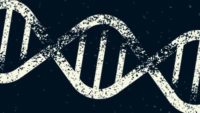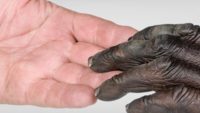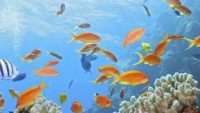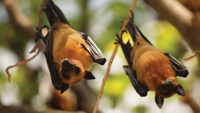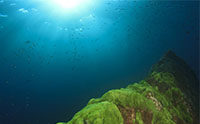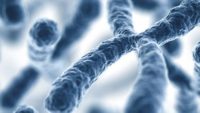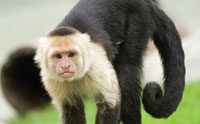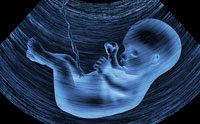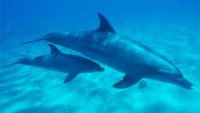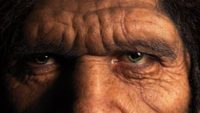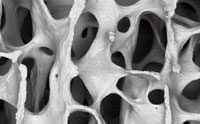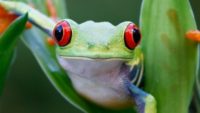By Dennis Sullivan The discovery of an easy way to “edit” genes may someday make it possible to manufacture “designer babies.” …read more Read more here: AIG Daily
New York Museum of Natural History misleads the public. …read more Read more here: creation.com
But how reliable are the ‘molecular clocks’? …read more Read more here: creation.com
The fossil record shows that the amazing variety of insects has remained similar with no compelling evidence of insect evolution. Evolutionists state, “Recent research is causing zoologists to rethink their perceptions of arthropod phylogeny.” More… …read more Read more here: icr.org
By Jeffrey P. Tomkins When you hear stories about the astonishing similarity between human and chimp DNA, there’s something they’re not telling you . . . …read more Read more here: AIG Daily
By Dr. Elizabeth Mitchell Evolutionists believe that new information about gill embryology suggests gills evolved in the common ancestor of all fish. …read more Read more here: AIG Daily
By Dr. Nathaniel T. Jeanson The recent publication of Adam and the Genome illustrated how evolutionists find new and more nuanced ways to contradict the biblical account. …read more Read more here: AIG Daily
The incredible transformation from tadpole to frog defies evolutionary explanation. …read more Read more here: creation.com
By Avery Foley Researchers have been working on Bat Bot (or B2), a robotic lightweight flier designed to mimic the incredible aerial ability of a bat. …read more Read more here: AIG Daily
Many think that Stanley Miller’s famous 1953 experiment showed that life could arise from non-living chemicals. But real chemistry shows that the chemicals Miller produced would react in the wrong way for life to form. …read more Read more here: creation.com
Plankton is the general name for the tiny creatures that drift with ocean tides and currents and form the basis of the ocean’s food chain. One particular group of plankton is called dinoflagellates. Recently, these were discovered to possess an amazing hunting mechanism that acts like a Gatling gun. More… …read more Read more here: icr.org
By Dr. Kevin Anderson A recent study of the salivary mucin-7 gene (MUC7) demonstrated there was genetic variation of this gene among different primate species. …read more Read more here: AIG Daily
Looking for the clearest amber on Earth? A new study shows that Dominican Republic amber is clear enough to see what’s inside. Apparently, ancient parasitic protozoans loved to live inside intact red blood cells. More… …read more Read more here: icr.org
By Tom Hennigan Forests are nurseries of health and well-being. New discoveries are showing that this doesn’t happen by accident. The trees are working together. …read more Read more here: AIG Daily
River trout have been found with amazing resistance to toxic pollutants but this turns out to be in-built. …read more Read more here: creation.com
A new study demonstrates that adult-like nervous system patterns exist throughout the early stages of human development, even in the hands and feet. These results add to the increasing evidence that aborted babies experience severe traumatic pain during all stages of pregnancy. More… …read more Read more here: icr.org
The traditional evolutionary model states that organisms evolve by random mutations. These mutations somehow provide new genetic information leading to novel traits that can be selected upon by the environment. Now, a new study shows mutations that commonly arise during cell division are not only unhelpful, but instead are highly correlated with cancer. More… …read more Read more here: icr.org
By Ken Ham One of our supporters recently sent us a photo of an exhibit at a major US metropolitan zoo. The sign at this exhibit says that dolphins were both “designed for the depths” and “perfectly adapted for life in the water.” Since apparently it’s National Dolphin Day today (April 14), I thought I’d share the photo with you. Evolutionists often try to explain evolution by claiming that the evolutionary process supposedly designed a particular creature for its environment. But naturalistic evolutionary processes are random and purposeless—they couldn’t design anything. And what about adaptation? Well, what they mean …read [More]
By John UpChurch Your eye’s complex ability to see color and motion points to the Creator. Even its limitations reveal His purposeful design. …read more Read more here: AIG Daily
18th century skeptic David Hume formulated some of the most famous arguments against design. Do they stand us under scrutiny? …read more Read more here: creation.com
Mutations cause variety in the coat colours of animals. These mutations are all ‘downhill’, in the wrong direction for mutations to make microbes-to-man evolution feasible. …read more Read more here: creation.com
By Dr. Elizabeth Mitchell Are human feet the foundational distinction between knuckle-walking apes and us? How did we learn to walk this way? …read more Read more here: AIG Daily
Were creatures designed with genomic plasticity to enable them to adapt as they reproduced and filled the earth? …read more Read more here: creation.com
This mammal with a leathery armour was once rare in Texas, but its ‘conquest’ of that state-and beyond-conveys a strong message. …read more Read more here: creation.com
How does one build a structural material that withstands stress and fracture? The answer is to copy optimal designs from living systems because they far exceed man’s ingenuity. Recently, an improved steel was developed by copying human bones. More… …read more Read more here: icr.org
The old seafarers’ tales should not have been dismissed. Many species of squid can, and do, fly. …read more Read more here: creation.com
By Avery Foley A frog’s ability to grab and eat such a variety of food—and so quickly—is a testament to the creativity of the Designer. …read more Read more here: AIG Daily

















